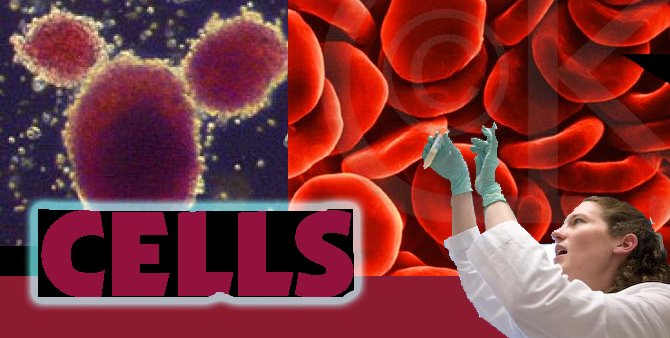- Golgi Apparatus: A series (stack) of flattened, membrane-bound sacs (saccules) involved in the storage, modification and secretion of proteins (glycoproteins) and lipids destined to leave the cell (extracellular) and for use within the cell (intracellular). The Golgi apparatus is abundant in secretory cells, such as cells of the pancreas.
- Golgi Vesicle: A membrane-bound body that forms by "budding" from the Golgi apparatus. It contains proteins (glycoproteins), such as digestive enzymes, and migrates to the cell (plasma) membrane. Golgi vesicles fuse with the cell membrane and discharge their contents into the exterior of the cell through a process called exocytosis. Some Golgi vesicles become lysosomes which are involved in intracellular digestion.
- Pinocytotic Vesicle: A membrane-bound vacuole formed by a specific type of endocytosis called pinocytosis. The plasma membrane invaginates (pinches inwardly) to form a vesicle that detaches and moves into the cytoplasm. Macromolecular droplets and particles up to 2 micrometers in diameter enter the cell within these pinocytotic vesicles. Larger particles (including bacteria) enter special white blood cells (phagocytes) through a form of endocytosis called phagocytosis. The Amoeba is a unicellular protist that ingests food (including algal cells) by phagocytosis.
- Lysosome: A membrane-bound organelle containing hydrolytic (digestive) enzymes. Lysosomes originate as membrane-bound vesicles (called Golgi vesicles) that bud from the Golgi apparatus. They are primarily involved with intracellular digestion. Lysosomes fuse with vesicles (small vacuoles) formed by endocytosis. The contents of these vesicles are digested by lysosomal enzymes. Autodigestion by lysosomes also occurs during embryonic development. The fingers of a human embryo are webbed initially, but are separated from each other by lysosomal enzymes. Cells in the tail of a tadpole are digested by lysosomal enzymes during the gradual transition into a frog.
- Peroxisome: A membrane-bound organelle that contains specific enzymes imported from the cytoplasm (cytosol). For example, certain peroxisomes contain the enzyme catalase which rapidly breaks down toxic hydrogen peroxide into water and oxygen. This reaction can be easily demonstrated by pouring some hydrogen peroxide on raw meat or an open wound.
- Glycolysis: An anaerobic oxidation pathway outside of the mitochondria in which glucose is oxidized to pyruvate with a net gain of 2 ATP molecules. Pyruvate is converted into a 2-carbon acetyl group which enters the Krebs cycle within the mitochondria.
- Mitochondrion: Membrane-bound organelle and the site of aerobic respiration and ATP production. Energy from the step-by-step oxidation of glucose (called the Krebs or citric acid cycle) is used to produce molecules of adenosine triphosphate (ATP). The Krebs cycle starts when a 2-carbon acetyl group combines with a 4-carbon group to form a 6-carbon citrate. Including glycolysis (which occurs outside the mitochondria), a total of 38 ATP molecules are generated from one molecule of glucose.


No comments:
Post a Comment